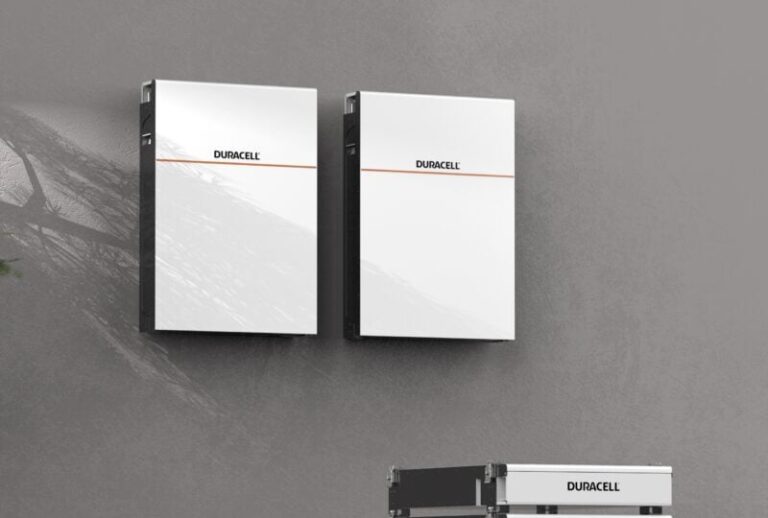Mark Millar, CEO of Puredrive Energy, manufacturer of home batteries and solar energy solutions, discusses how affordable batteries can support lower energy costs and a reduction in emissions.
The global adoption of sustainable energy solutions is increasing rapidly. Now that solar panels and heat pump installations are becoming increasingly accessible and affordable for homeowners and commercial properties, installers have a unique opportunity to add an extra boost to their green energy bow.
As homeowners and commercial customers continue to seek cleaner and cost-effective energy, home storage batteries provide a unique opportunity to optimize existing systems and maximize the investments they have made to reduce costs and reduce emissions.
Industry issues
The rapid expansion of the solar and storage industries has revealed significant challenges impacting end users.
The influx of new solar installation companies may lead to a lack of technical expertise and aftercare capacity needed to meet rising customer expectations and demand.
Addressing this issue will require a robust approach from solar and storage product manufacturers that prioritize quality assurance and a high level of ongoing support to both installers and homeowners. For example, distributing products through carefully chosen, well-vetted installation channels can ensure that both technical implementation and aftercare are up to standard.
Additionally, collaboration between installation teams and technical support services contributes to a smooth onboarding experience for users. This approach also allows homeowners to optimize their solar and energy storage systems (ESS) for long-term energy savings, while maintaining customer satisfaction throughout the product life cycle.
Benefits of home storage
To maximize end-user experiences with solar and storage solutions, installers must first understand the substantial benefits of such systems.
ESS can store electricity that comes from sustainable generation, such as solar panels or from off-peak sources. It can maximize current solar installations by conserving the energy until it is needed by the homeowner or residential building. Battery storage can also take advantage of smart pricing to store energy purchased at cost-effective rates, ready for peak periods when electricity would have been significantly more expensive. This enables significant savings for the customer.
Lithium-ion batteries are the leading technology in home energy storage, making batteries more affordable, longer lasting, and higher energy density.
While installers traditionally pair ESS with an existing solar panel, more and more homeowners and commercial customers are choosing a battery-only option, using their smart time-of-use rates to reduce their energy bills. By choosing to install ESS, installers open up a whole new market of potential customers and discover emerging revenue streams.
Retrofit of solar batteries
Existing solar energy users want to expand their current system with solar battery storage. 43% of UK households with solar panels also have an energy storage battery, demonstrating the demand for retrofitting an ESS. Adding storage to an existing solar system is a simple and logical step for customers and requires no changes to the solar panels. Once completed, the ESS is charged using solar-generated energy and can be used to power the home in the evening. Users can also integrate their EV charger with their ESS to create their own ecosystem, charging their car during peak times using stored energy purchased at off-peak rates.
Battery-only installations
Customers can also choose to install a battery before installing an existing solar system to reduce their initial investment, or even as a standalone scheme to maximize their smart rates and reduce their energy costs.
An ESS can be programmed to purchase power day and night at the most cost-effective time and store it in the system. This is then used to power the home or property when demand requires it.
For installers, this presents an opportunity to offer an expanded range of services beyond traditional solar projects. ESS enables seamless integration and offers both mains and solar configurations. Installers can emphasize the direct cost benefits of a battery-only system while emphasizing future-proof options and investments, such as solar panels, for greener living and greater grid independence.
Installation process
Installers can conduct an initial site survey in person or even over the phone to determine the ideal location for the installation, ensuring adequate ventilation, load-bearing capacity and compliance with local electrical codes. A Wi-Fi signal check is performed to ensure sufficient signal strength, and finally the total distance between the ESS and the solar panel input or main income is confirmed.
Typically, battery units are installed indoors in a utility room, garage or under-stairs area and are typically wall mounted or modularly attached to the floor. For optimal wiring, the units are placed close to the electrical distribution board. The installation is simple and time-saving; the complete installation often takes only half a day.
The ESS is connected to the house’s electrical distribution box via a special breaker. To control the cycles of the ESS, installers must set the inverter to allow scheduled charging and discharging times, while also efficiently converting direct current to alternating current, which is then distributed within the home or business premises. In addition, if customers combine batteries and solar panels, installers must configure the inverter to enable smooth connection and energy transfer between the battery, the solar panels and the grid.
Once installed, testing must be performed for safety reasons. This is followed by a commissioning process to tailor the best overall outcome for all components in the ESS.
Installers can then provide the necessary end-user training to ensure the customer understands how the system is monitored and how to maximize this for optimal performance and savings.
Clear guidance after installation is critical to both homeowner satisfaction and the long-term viability of the system.
As technological developments have made them more efficient and affordable for customers, in addition to the need for cost-effective energy, ESS is being added to the product range for installers.
By doing this, installers can expand their product portfolio, tap into new revenue streams and ensure they offer a complete experience, combined with or without solar energy, to customers looking to reduce their energy costs and save on carbon emissions.


